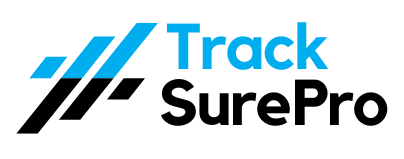Proactive Risk Management: Strategies for Minimizing Risks in Compliance and Insurance

Proactive Risk Management: Strategies for Minimizing Risks in Compliance and Insurance
Introduction:
Proactive risk management is a crucial aspect of business operations, especially in the realms of compliance and insurance. It involves identifying, assessing, and mitigating potential risks before they escalate into significant issues. In this comprehensive guide, we will delve into the importance of proactive risk management, discuss strategies for minimizing risks in compliance and insurance, and highlight how TrackSurePro offers a solution to streamline risk management processes effectively.
Importance of Proactive Risk Management:
- Risk Identification:
- Proactive risk management helps businesses identify potential risks related to compliance violations, insurance gaps, regulatory changes, and operational disruptions.
- Risk Assessment:
- Assessing the impact and likelihood of risks allows businesses to prioritize risks based on severity, frequency, and potential consequences.
- Risk Mitigation:
- Implementing strategies to mitigate risks, such as preventive measures, controls, policies, and procedures, minimizes the likelihood of risk occurrence and its impact on business operations.
- Compliance and Insurance Protection:
- Proactive risk management ensures that businesses stay compliant with regulations, contractual obligations, and industry standards while maintaining adequate insurance coverage to protect against financial losses and liabilities.
Strategies for Minimizing Risks in Compliance and Insurance:
- Conduct Risk Assessments:
- Regularly conduct risk assessments and audits to identify potential risks in compliance, insurance coverage, data security, regulatory changes, and operational processes.
- Develop Risk Mitigation Plans:
- Develop comprehensive risk mitigation plans that outline preventive measures, controls, policies, procedures, and contingency plans to address identified risks effectively.
- Implement Compliance Controls:
- Implement internal controls, monitoring mechanisms, and compliance frameworks to ensure adherence to regulatory requirements, industry standards, and contractual obligations.
- Review Insurance Policies:
- Review and assess insurance policies regularly to ensure adequate coverage, understand policy exclusions, limitations, and requirements, and address any gaps in coverage.
- Training and Awareness:
- Provide training, guidance, and awareness programs to employees, contractors, and stakeholders on compliance requirements, risk management practices, and insurance coverage.
- Monitor Regulatory Changes:
- Stay updated on regulatory changes, industry trends, and emerging risks that may impact compliance obligations, insurance needs, and risk management strategies.
- Data Security Measures:
- Implement robust data security measures, encryption, access controls, and incident response plans to protect sensitive information, prevent data breaches, and mitigate cybersecurity risks.
- Collaboration and Communication:
- Foster collaboration and communication among risk management teams, compliance officers, insurance brokers, legal advisors, and stakeholders to align risk management strategies, share insights, and address emerging risks proactively.
- Continuous Improvement:
- Continuously evaluate and improve risk management processes, compliance controls, insurance coverage, and contingency plans based on lessons learned, feedback, and industry best practices.
TrackSurePro as a Solution for Proactive Risk Management:
- Risk Identification:
- TrackSurePro helps businesses identify potential risks by providing real-time monitoring, alerts, notifications, and reporting on compliance status, insurance coverage, regulatory changes, and data security.
- Risk Assessment:
- TrackSurePro facilitates risk assessment and prioritization by offering customizable risk assessment templates, scoring models, risk heat maps, and impact analysis tools.
- Risk Mitigation Plans:
- TrackSurePro enables businesses to develop and implement risk mitigation plans by integrating preventive controls, policies, procedures, and contingency plans into workflows and compliance frameworks.
- Compliance Controls:
- TrackSurePro offers internal controls, automated compliance checks, audit trails, and compliance reporting features to ensure adherence to regulatory requirements, industry standards, and contractual obligations.
- Insurance Review:
- TrackSurePro streamlines the insurance review process by providing centralized storage, document management, policy tracking, renewal reminders, and coverage analysis tools.
- Training and Awareness:
- TrackSurePro supports training and awareness programs by providing learning management features, document sharing capabilities, and communication tools for educating stakeholders on risk management practices and compliance requirements.
- Regulatory Monitoring:
- TrackSurePro monitors regulatory changes, updates, and industry trends through integrations with regulatory databases, news feeds, and alerts to keep businesses informed about potential compliance risks and obligations.
- Data Security Measures:
- TrackSurePro implements data security measures, encryption, access controls, and incident response capabilities to protect sensitive information, prevent data breaches, and ensure compliance with data protection regulations.
- Collaboration and Communication:
- TrackSurePro fosters collaboration and communication among risk management teams, compliance officers, insurance brokers, legal advisors, and stakeholders through messaging features, document sharing, task assignments, and workflow automation.
- Continuous Improvement:
- TrackSurePro supports continuous improvement in risk management processes by providing analytics, insights, feedback mechanisms, and benchmarking tools to evaluate performance, identify areas for enhancement, and implement best practices.
Conclusion:
Proactive risk management is essential for businesses to minimize risks, protect against compliance violations, ensure adequate insurance coverage, and maintain operational resilience. By implementing strategies such as risk assessments, risk mitigation plans, compliance controls, insurance reviews, training programs, regulatory monitoring, data security measures, collaboration efforts, and leveraging solutions like TrackSurePro, businesses can enhance their risk management capabilities, improve decision-making, and achieve sustainable success in today’s dynamic business environment. Embracing proactive risk management practices and leveraging digital solutions like TrackSurePro is key to staying ahead of risks, enhancing compliance, and safeguarding business continuity.

